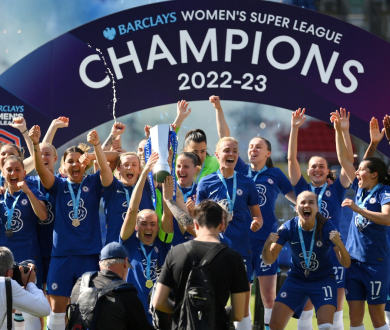
Lessons for Developing and Using Analytics from the Expected Goals Model
Data analytics have become an increasingly prevalent part of the sporting world over the past two decades, so much so that their findings have fundamentally changed the way many sports are played. Yet, despite the entry of analytics into mainstream consciousness following the popularity of Moneyball (Michael Lewis’s account of the analytical approach taken by the Oakland Athletics in the 2002 MLB season to compete with teams that had much larger payroll budgets), the purpose of data analytics within a sporting organization is still widely misunderstood.
In the following paragraphs, we will use the case study of the expected goals model in soccer to shed light on the processes that create useful metrics and how those processes relate to the role of analytics in team decision making. While the mathematics underlying analytical frameworks can make them seem convoluted upon first glance, at their core data analytics are mean to simplify our understanding of the sport in question and provide an additional, but not mutually exclusive, tool for decision-making.
Good analytical frameworks attempt to provide clarity on a clear, specific question
Analytics in the world of soccer are not as developed as in sports like baseball or basketball, largely because the interconnectedness of player actions and small numbers of goals scored make it difficult to isolate individual impact. One framework that has found mainstream traction is the expected goals model. The model set out to tackle a straightforward question: “how can we better quantify a team’s underlying performance independent of results?”
The observation underlying the framework is similarly simple; finishing chances is inherently random. Finishing is a logical event to target in the sport as it is chiefly an individual action and it has an outsize effect on the result of a game. In developing their models, the early proprietors of expected goals dealt with the difficulty of applying analytical models to the complex dynamics of soccer not by making their approach similarly complex, but rather than by finding an area of the game that had both an significant impact on results and a straightforward objective. Through isolating only actions where a player shoots the ball and assigning an expected value to each of those actions the expected goals model was created; it has proven to be better at predicting a team’s future results than their past results, indicating success in separating performance from results.
Perfection is the enemy of progress
Expected goals is far from a perfect metric, an admission one its early developers, Michael Caley, is not shy to acknowledge; “Expected goals constitutes an important step along the path toward a truly robust model of scoring chances and of football itself.” The goal of any novel analytical exploration should not be to find the singular, bullet-proof solution to success in a sport. That is a foolhardy approach that will almost certainly doom the project to failure. Instead, as Caley points out, the purpose should be to offer a new insight that enhances understanding of a certain facet of the game.
Returning to the question that inspired the expected goals model, they key phrase is “better quantify” rather than “perfectly quantify.” Expected goals took the football community one step closer towards isolating performance from results, and succeeded in doing so because its creators recognized and accepted it was not perfect, just better than what existed before.
Be creative using what already exists
Clubs have had access to largely the same expected goals models for many years, but what determined the utility of the framework to a given club was how creatively and intelligently they made use of it. Expected goals was designed with the purpose of evaluating team performance, but savvy operators, such as Liverpool Football Club, recognized its utility in their transfer recruitment policy. Liverpool prioritized signing non-striker attacking players who underperformed on high expected goals and expected assists numbers, directly leading to the signings of Mo Salah, Sadio Mane, and Roberto Firmino, the attacking trio that would drive Liverpool’s most successful stretch in decades. Liverpool did not need their analytics department to reinvent the wheel to find a competitive advancement, they merely had to be novel in how they used what was already in existence.
Analytics are not mutually exclusive with traditional, observational analysis
We have delved into the story of expected goals because understanding how and why analytical frameworks are developed helps illuminate their role within sporting organizations. Analytics are often presented in opposition with more qualitative, observational based research, as if the two were mutually exclusive tools for decision-making. Analytical metrics are designed to provide a new approach to tackle a problem rather than the be-all and end-all for decision making, and therefore have a place in conjunction with other methods rather than as a replacement.
Here at Sportsology, we recognize that data analytics can work in harmony with more traditional methodologies by providing another way in which to frame the problem. For example, our Head Coach Analysis and Search product draws objective insights from quantitative data analysis to produce scores for coaching tenures, but the model was designed with specific questions in mind, and as such is matched with market intelligence to offer additional insights and, crucially, address those questions the model was never designed to answer.
Good analytical frameworks are usually not overly ambitious in scope. They are designed to help reach a clearer understanding of a specific question or concept, but not necessarily to be the perfect answer to that question. In understanding how to effectively apply the insights drawn from data analytics, it is essential to keep in mind how, and why, the metric was created. Through doing so, the symbiotic relationship between quantitative and qualitative research methods becomes easier to internalize as an organizational philosophy.











